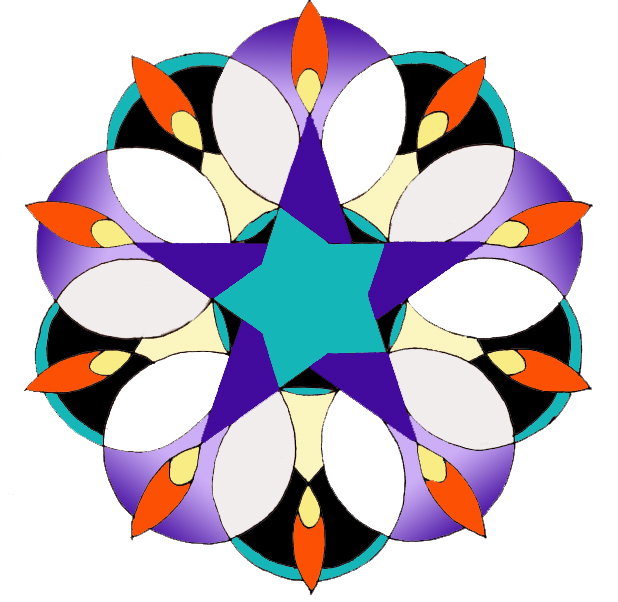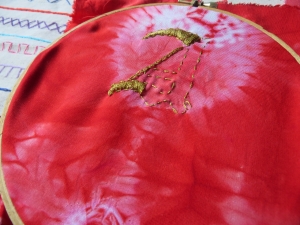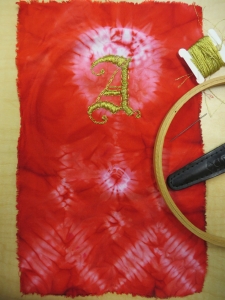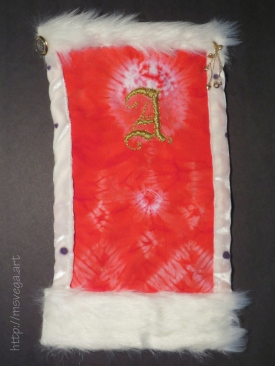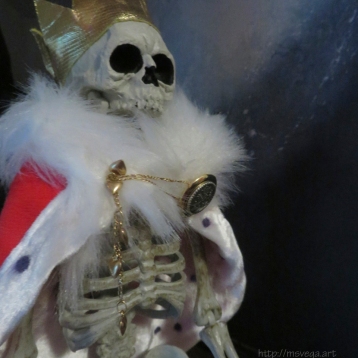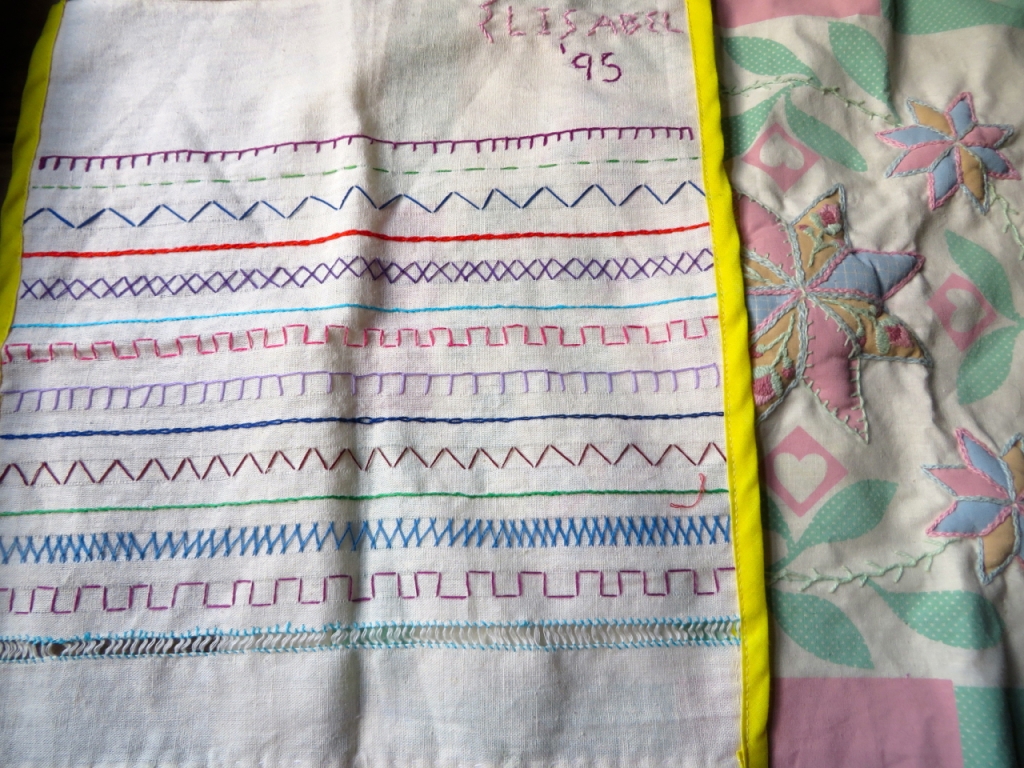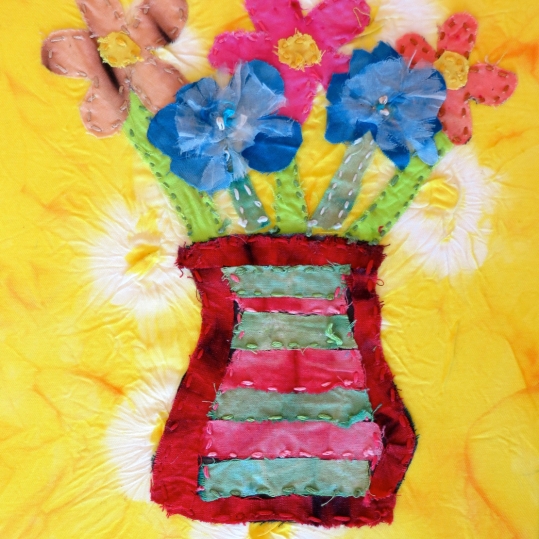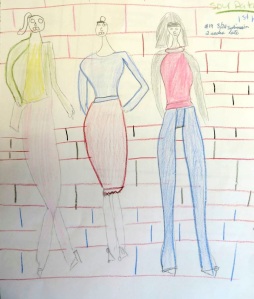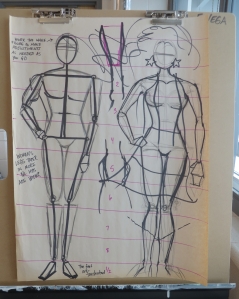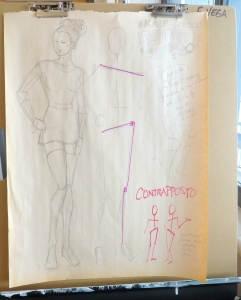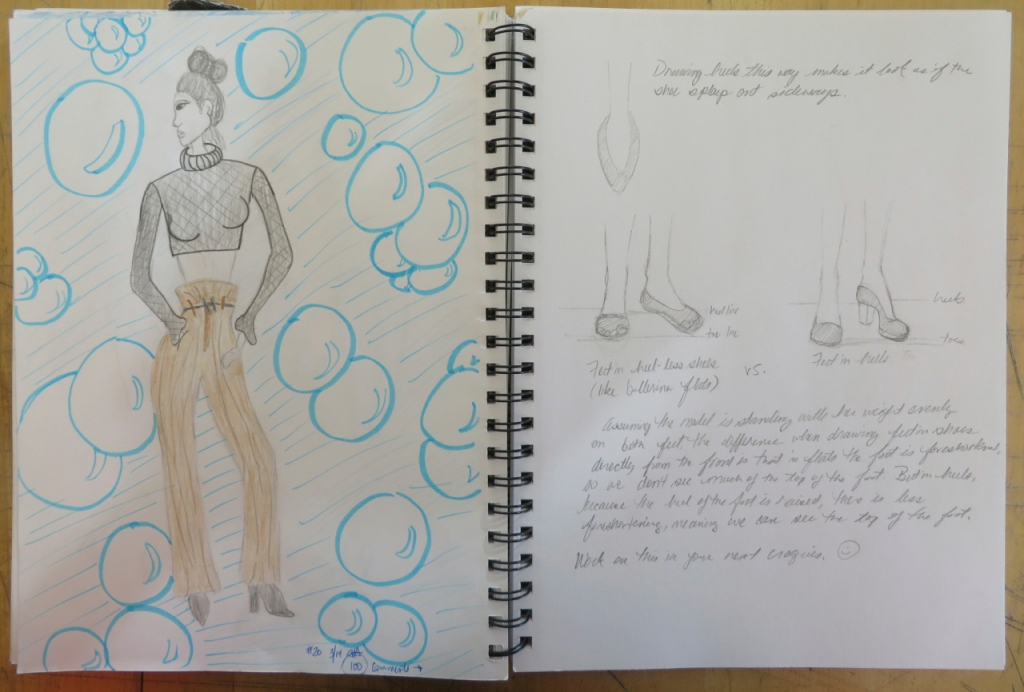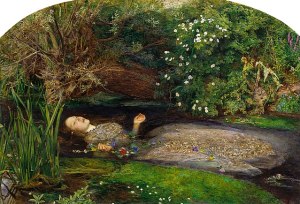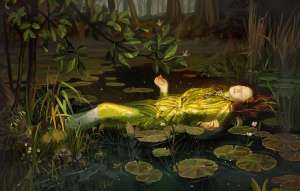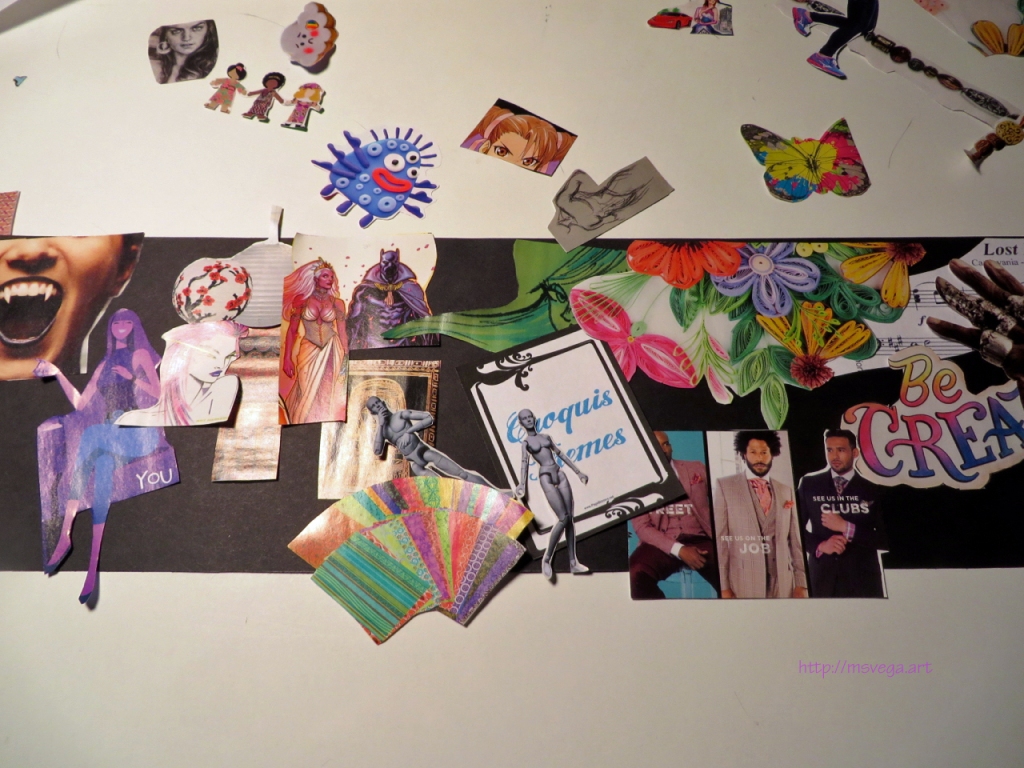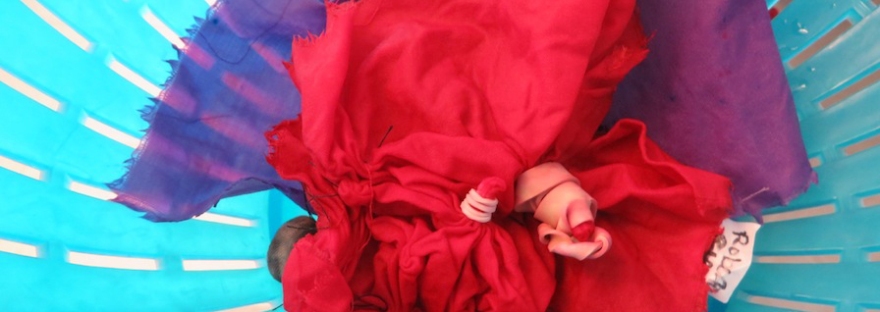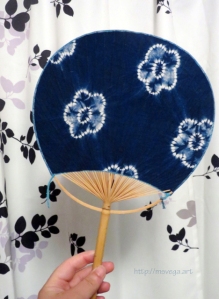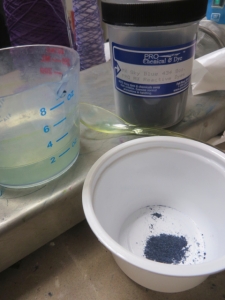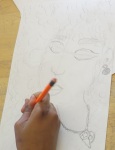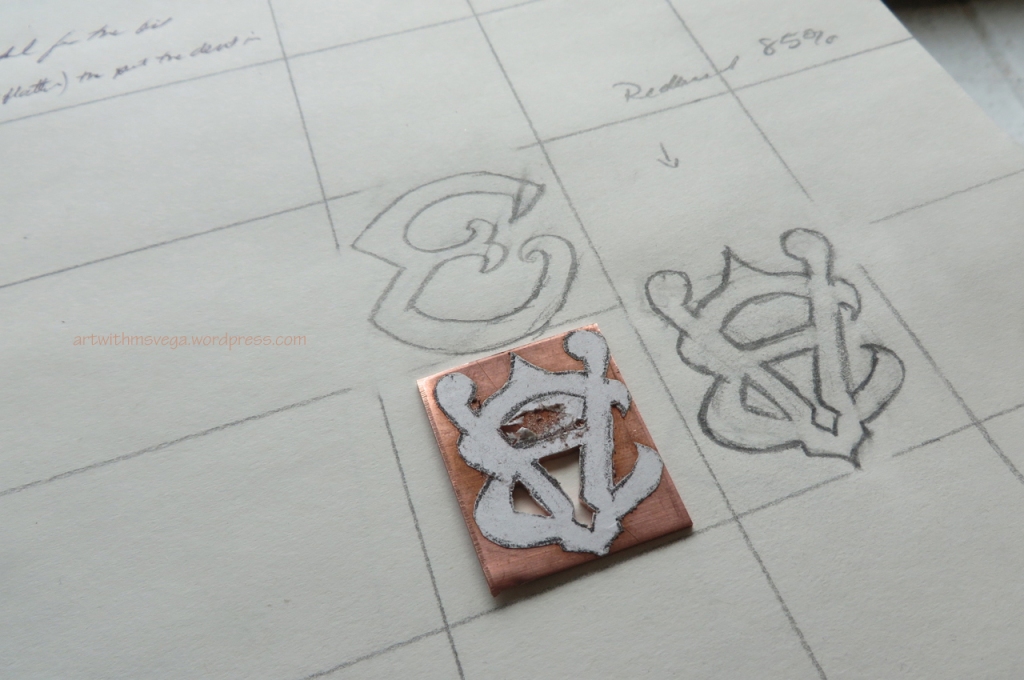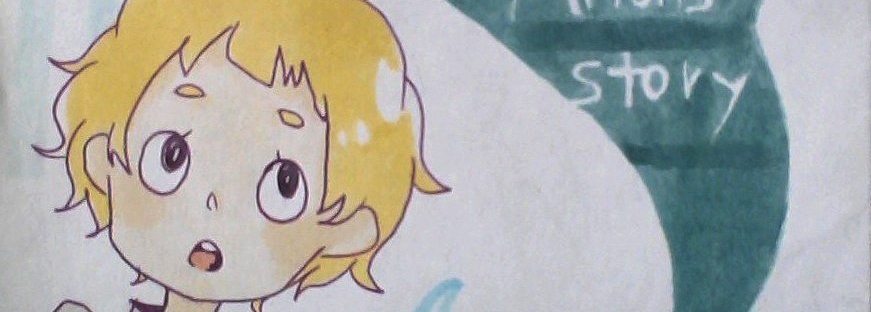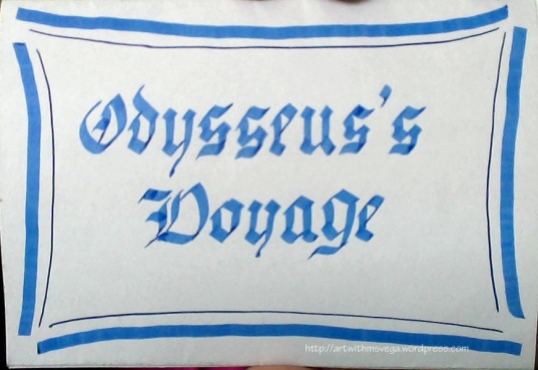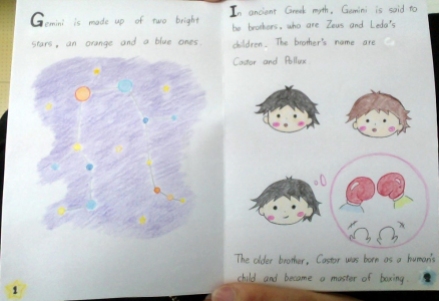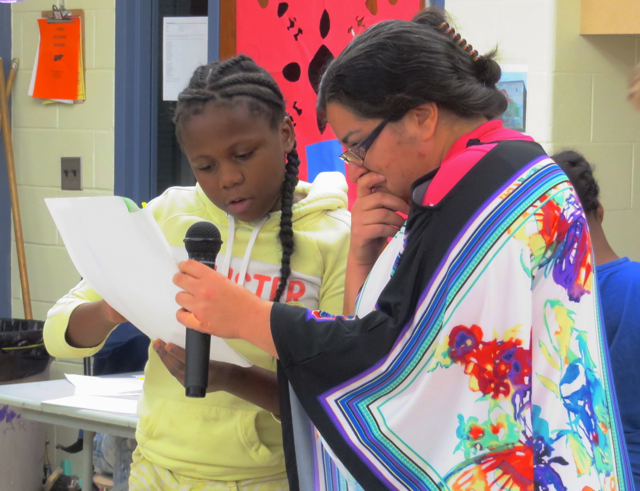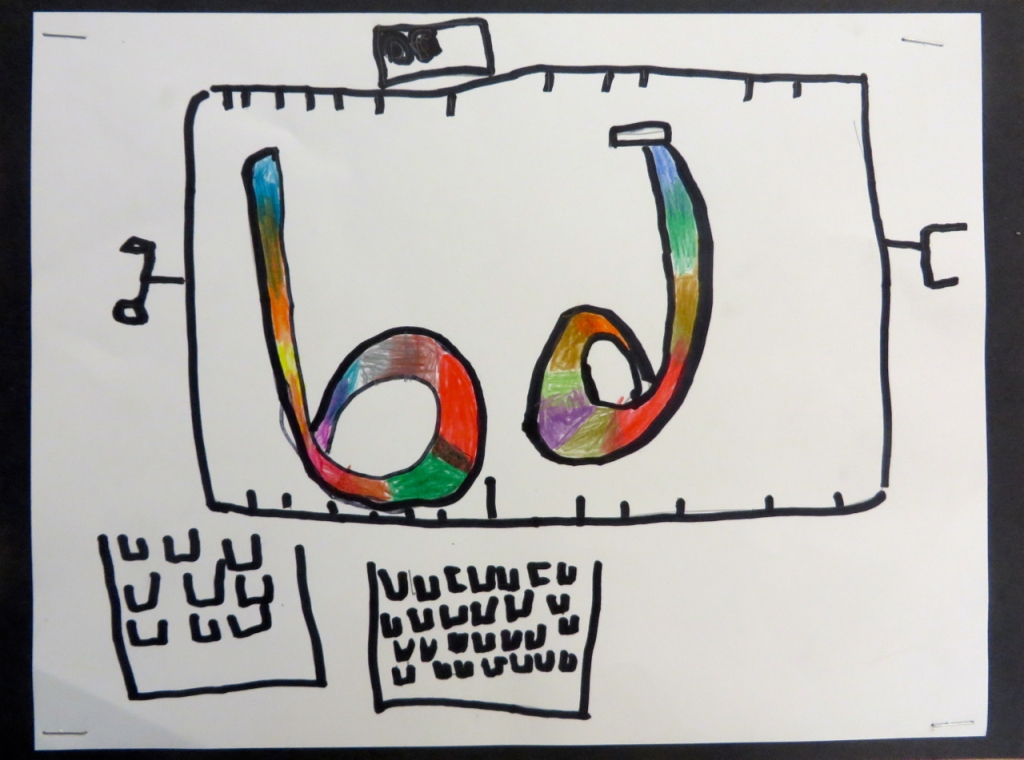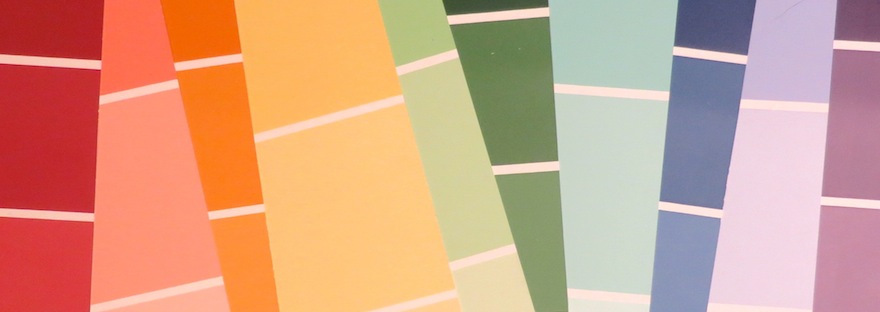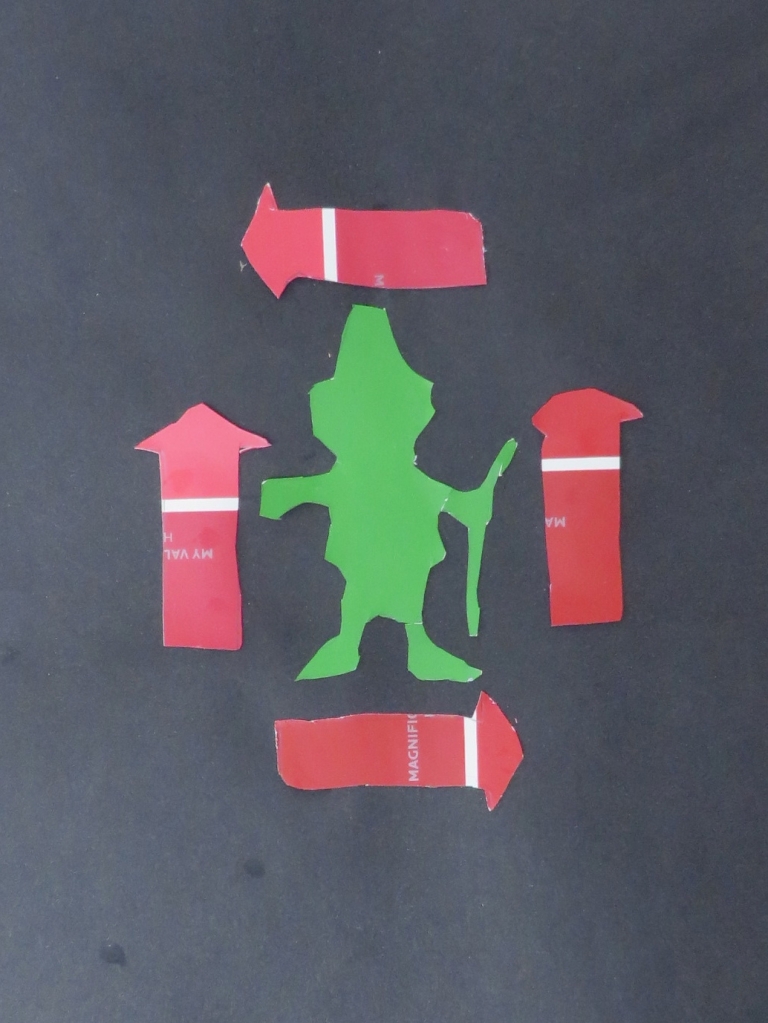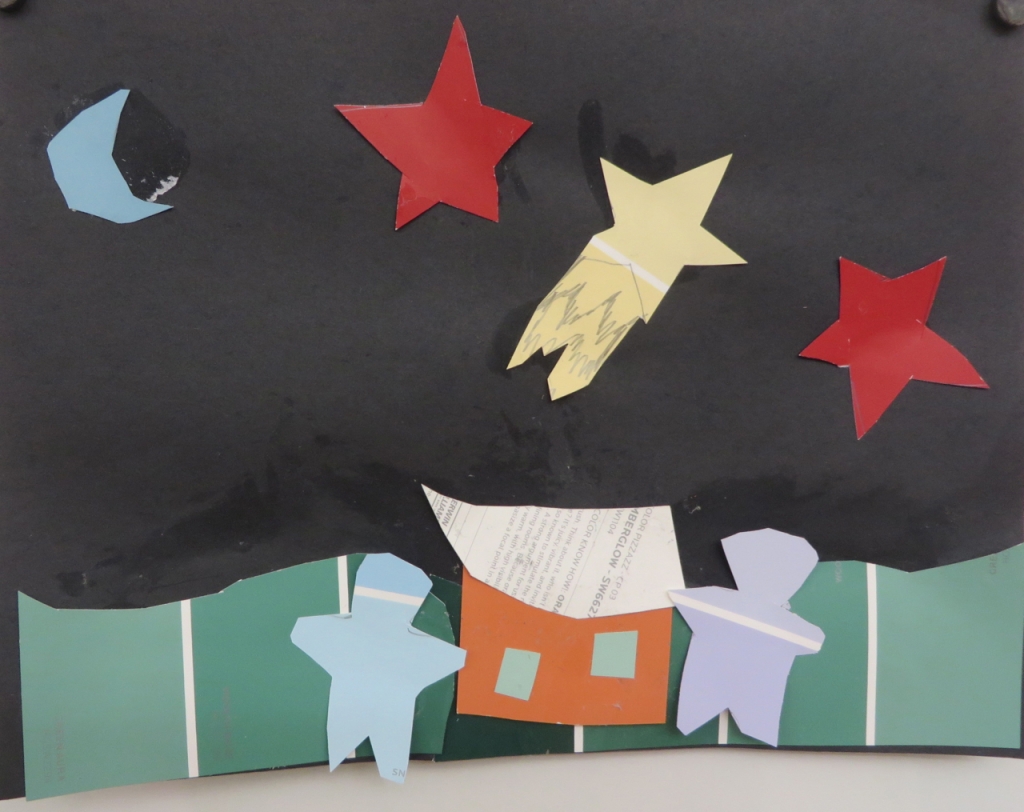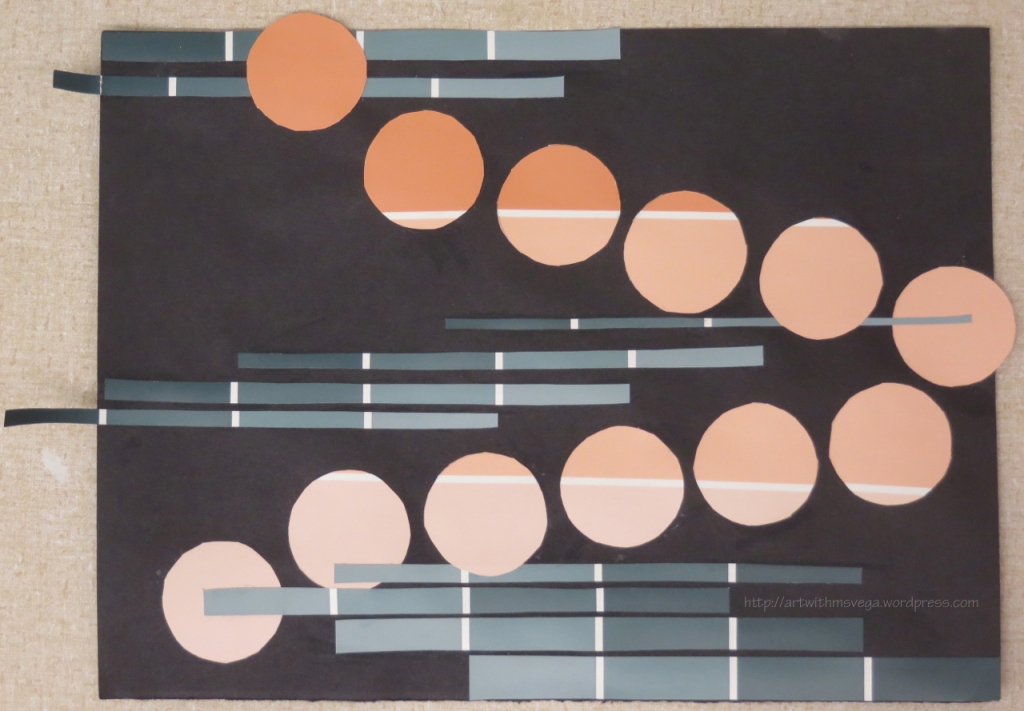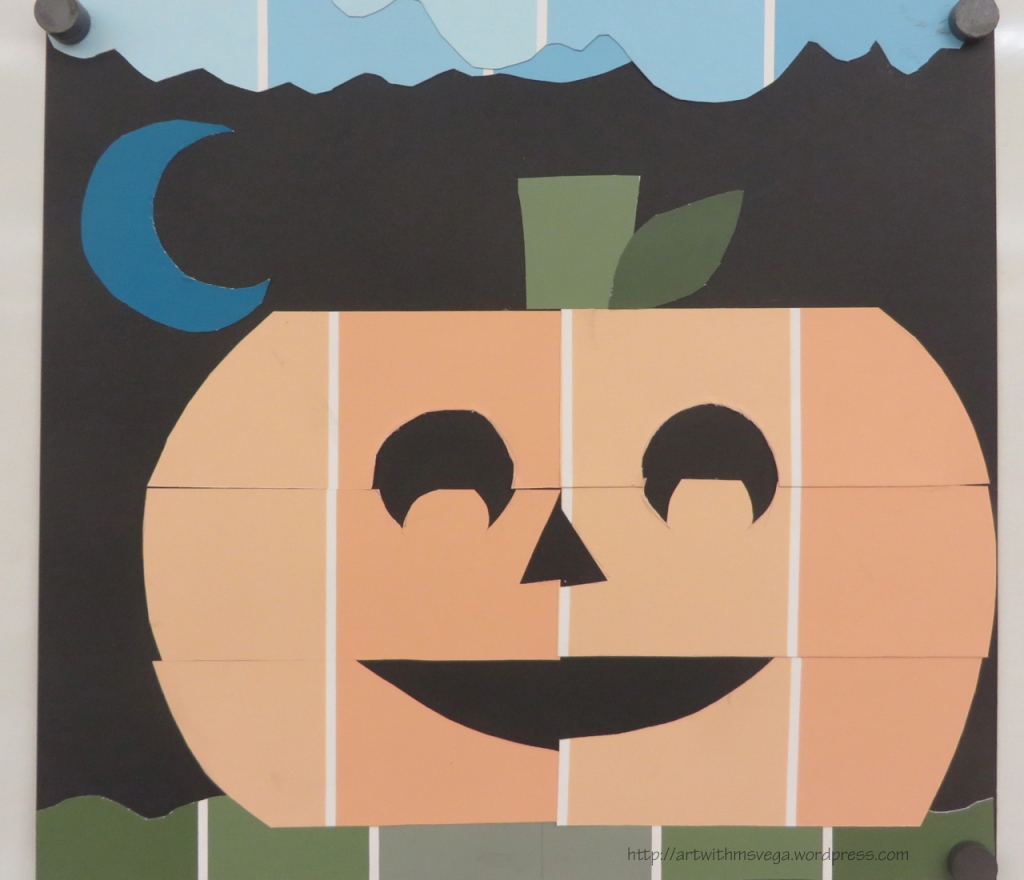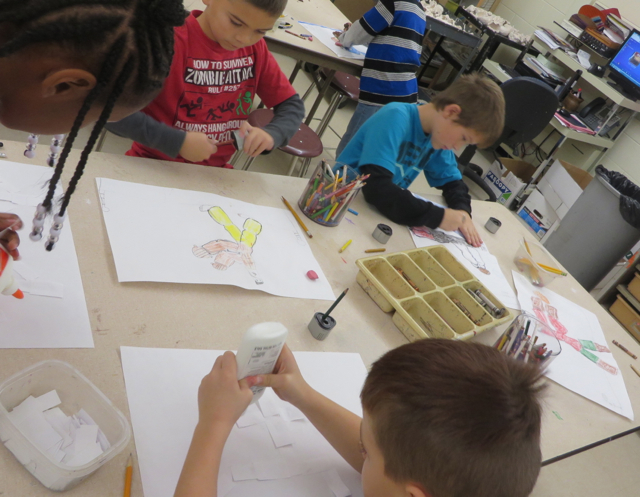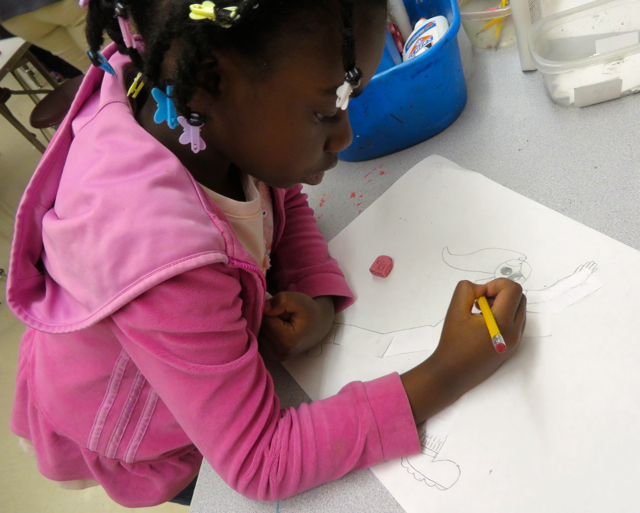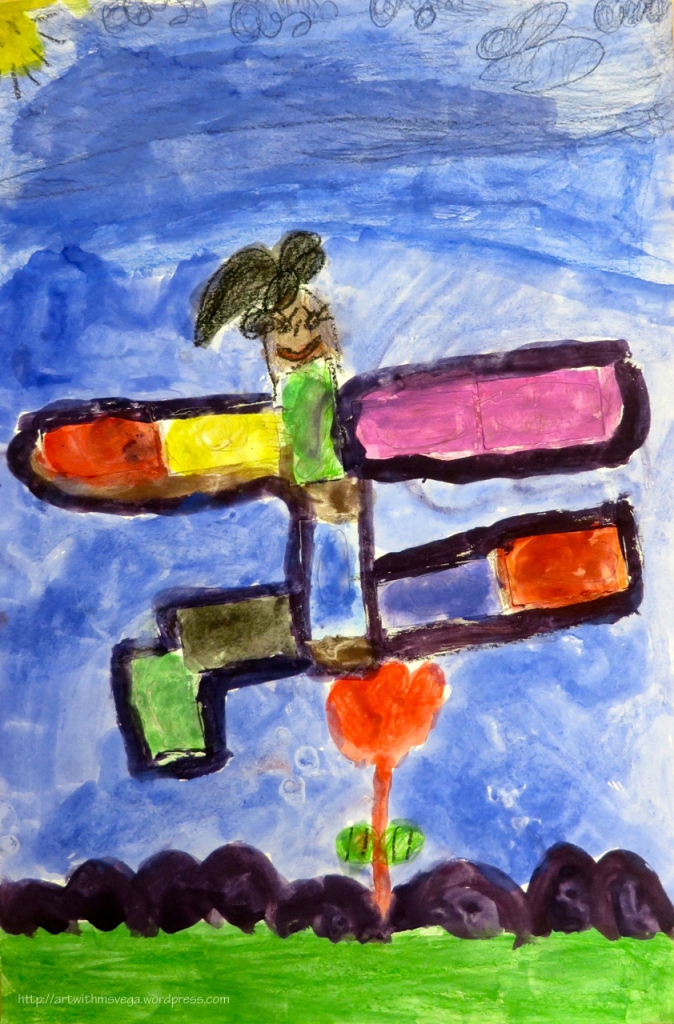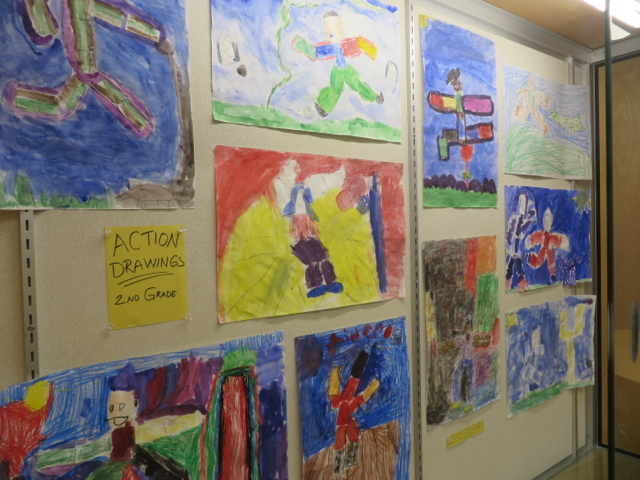Last October, when CVS discounted their Halloween merchandise about a week before the Day, I found some “Dress Up Skeletons” that were actually fairly accurate anatomically for $4 decorations. With 50% off, I couldn’t resist the opportunity to get something that both amused me and might come in handy in a future figure drawing class. I chose a skeleton wearing a gold crown and black cape with fur trim at the neck. It reminded me of Dave Gahan in the video for Depeche Mode’s “Enjoy the Silence.”
When I started my full-time student-teaching in January and saw how much help the students in the Fashion Illustration class needed with figure drawing, I got the skeleton out from my Halloween decorations box, and took it along with a miniature of the usual jointed wooden reference figure found in art supply stores. It was at school that I realized the true potential of this skeleton.

That potential was for pure comedy gold. Though I would sit it up on the windowsill or at my table, it would inevitably fall over. Sometimes people would pick it up and set it back down without trying to sit it back up. Either way, the skeleton would end up in the most hilarious poses all on its own. It didn’t help that the hinge at the jaw was so loose it wouldn’t stay closed. So the skeleton has a perpetual look of sheer joy and/or surprise on its face, as if it’s always at the peak of a roller coaster.
Because of the type of person I am, I couldn’t keep referring to the skeleton as “the skeleton.” But I didn’t want to give it a name a student or teacher had, as not everyone is comfortable with skeletons and other death symbols. Neither did I want to potentially jinx Mr. Gahan by naming the skeleton Dave, and there was already a David in the room—a replica of Antonin Mercié’s statue of the Biblical hero. Despite those constraints, with current trends away from traditional names, it wasn’t that hard to find names no one had even in a school with nearly 3,000 students. Given the skeleton’s outfit and the fact that I was watching Masterpiece’s Victoria, I soon realized that his skeleton was none other than His Serene Highness Prince Albert of Saxe-Coburg and Gotha.

It was at this point that I perhaps got a little carried away. But I regret nothing. 😂
The black, plastic cape Albert (the skeleton) came with had been hot-glued onto his scapulae, but it had come off one side. Since I was going to be learning how to do shibori dyeing anyway, I decided to make Albert a new cape. I sketched out a design that incorporated stitched shibori, settled on a color (red, of course), and cut out a piece of silk. The Townhill Studio website was particularly helpful for figuring out how to do the stitching, as my first attempt at nui shibori had not come out to my liking.
 Unfortunately, I had some trouble keeping my stitches straight on the slippery silk. What’s more, since I was only tying two knots into the quilting thread, on one of the chevrons, the knot actually slipped through the needle hole, undoing the resist! To add insult to injury, when I went to iron out the dyed piece, I didn’t notice that someone had left a tiny bit of fabric glue on the ironing board. The glue got on the silk, and I could not get it out for the life of me. Between this blemish and the incomplete chevron, I decided to give it another go, using rayon this time.
Unfortunately, I had some trouble keeping my stitches straight on the slippery silk. What’s more, since I was only tying two knots into the quilting thread, on one of the chevrons, the knot actually slipped through the needle hole, undoing the resist! To add insult to injury, when I went to iron out the dyed piece, I didn’t notice that someone had left a tiny bit of fabric glue on the ironing board. The glue got on the silk, and I could not get it out for the life of me. Between this blemish and the incomplete chevron, I decided to give it another go, using rayon this time.
I did, however, really like how the circle had turned out on the silk piece. I achieved this effect by stitching all around the circle with a single thread, then using rubber bands to have a makiage resist to create the wide band of white.
Albert being funny again, and the rayon cape getting dyed in Strongest Red.
The circle didn’t come out as nice on the rayon cape as it had on the silk one. Perhaps it was because I stitched the circle in two parts rather than one. I had thought having more sections would create a stronger resist and thus a bolder pattern, but I guess one of the semicircles ended up under the other or something. It was still an interesting effect, however.
Once the cape was dyed, I set about embroidering a blackletter capital “A” onto the cape, with the stitched shibori circle serving as a “halo” for it (since one of Victoria’s pet names for Albert was “My angel”). Working with the metallic thread was very frustrating. I Googled “how to work with metallic embroidery floss” and found this blog post and realized I was using the floss incorrectly! No wonder it kept fraying.
I was pretty satisfied with how the “A” turned out, although it wasn’t my best work. To be honest, I wasn’t trying that hard, as at this point not even I knew just how far I would be taking this. I thought this would be it, the shibori and the embroidery. But then I looked at the back of the cape, at the back of the embroidery, and realized that now, I would have to add a lining to hide all knots.
My mentor had some white velvet that would be perfect for the lining. Well, I’m assuming it’s velvet; my mentor called it “devoré” but that seems to be a process rather than the fabric itself… Whatever it is, Albert seemed to approve!
“Eso si que es humillante,” my mother opined of the string attached to Albert’s head.
Of course, it wouldn’t be a royal cape without some ermine spots. It’s rather gruesome to think that each spot on a cape represents one stoat, so I felt a little guilty even just replicating the pattern even though I obviously was not using real fur. I can only hope the sheep whose wool I used had been treated well.

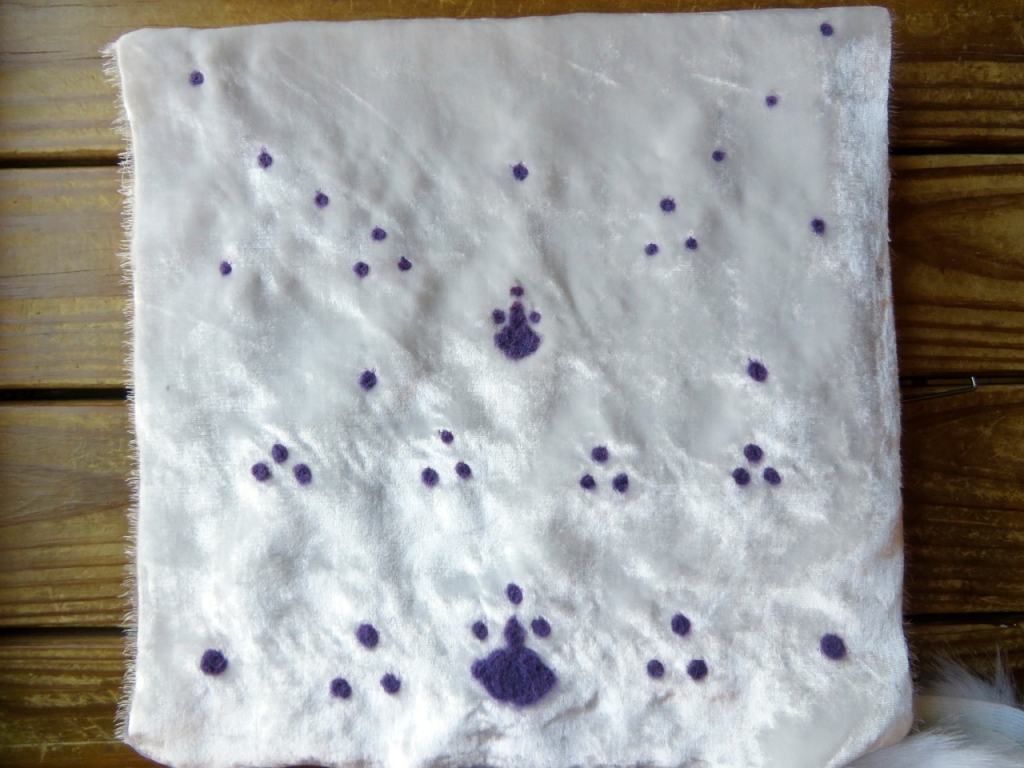
 I didn’t have too much of a hard time felting. It helped that I had intentionally kept my nails long to protect my fingers from any accidental stabbings! But, as I was mostly eyeballing the placement of the spots, there were some that were too big, or too far away from the rest of the group, and I had to pull them out and redo them.
I didn’t have too much of a hard time felting. It helped that I had intentionally kept my nails long to protect my fingers from any accidental stabbings! But, as I was mostly eyeballing the placement of the spots, there were some that were too big, or too far away from the rest of the group, and I had to pull them out and redo them.
Having a velvet lining naturally led to the need to have big, fuzzy fur trim. I found a nice strip of white faux fur at JoAnn’s. I also found the perfect buttons to hold the cape closed! But before I could get to those, I had to sew the cape shell and lining together. I figured it would be difficult to pull it off by hand, so I asked my mother to show me how to use the sewing machine.
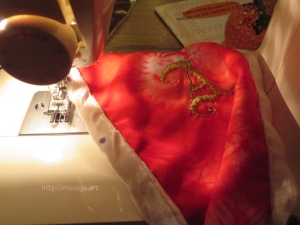 After practicing on a similar piece of fabric with a spare bit of velvet, and being thoroughly confused about why there were two strings, I was able to put the cape together fairly well. The only problem was that I had been told it was okay to iron this fabric, but that seems to have made it shrink! I know that I had cut enough to have the velvet hemming the sides and bottom of the cape, but after ironing it, it was the same length as the red rayon. So, I would need to put fur trim on the bottom as well to compensate. I found a video tutorial about putting a faux fur trim on a skirt that helped me cut the fur I had for Albert’s cape.
After practicing on a similar piece of fabric with a spare bit of velvet, and being thoroughly confused about why there were two strings, I was able to put the cape together fairly well. The only problem was that I had been told it was okay to iron this fabric, but that seems to have made it shrink! I know that I had cut enough to have the velvet hemming the sides and bottom of the cape, but after ironing it, it was the same length as the red rayon. So, I would need to put fur trim on the bottom as well to compensate. I found a video tutorial about putting a faux fur trim on a skirt that helped me cut the fur I had for Albert’s cape.

My mother wasn’t sure her sewing machine could go through two layers of faux fur plus the rayon and velvet, and I didn’t want to risk messing anything up, so I hand-sewed the trim unto the cape. Even pinning the fur in place, it was difficult to keep everything straight. At this point I wished I had actually measured instead of eyeballing everything. Luckily, the crookedness isn’t terribly visible once the cape is on Albert, but when it’s laying flat, it’s obvious that the trim around the neck was the experiment! I should’ve practiced with the trim on the same piece of fabric I had used to practice on the sewing machine, but at this point, I was in the home stretch and just wanted to get this done. Also, I just couldn’t wait to see it all together!
I considered several options for the cape closure. I knew I wanted to use the buttons I’d found that had a sort of abbreviated version of the UK coat of arms on them, but what about the chain? I wasn’t able to find one short enough. However, I remembered I had a bracelet with little hearts on it. It’s a child bracelet. Although it still fits, it’s a hassle to try to put it on by myself, so I never wear it anymore. Rather than let it spend another year sitting in a jewelry box, why not give it to Albert?
With the cape finally finished, it was time for a photo shoot! Click the thumbnails to enjoy the majesty of Prince Albert!
I took Albert back to school after finishing the cape so that I could show him off. I had been using him as an example in both the Fibers class and the 3D Studio Art class, which had been working on making clothes for felted dolls.


My student-teaching at Cass Tech has ended, so Albert is back home with me, relaxing in front of my jukebox. The two photos above were taken on my last official day interning there. I would joke that the little felted doll in the ceramic bowl was Victoria, but as that probably was not the intention of whatever student made her years ago, I’d like to find a shorter skeleton to turn into the Queen. Maybe I’ll find her this Halloween!
☆
